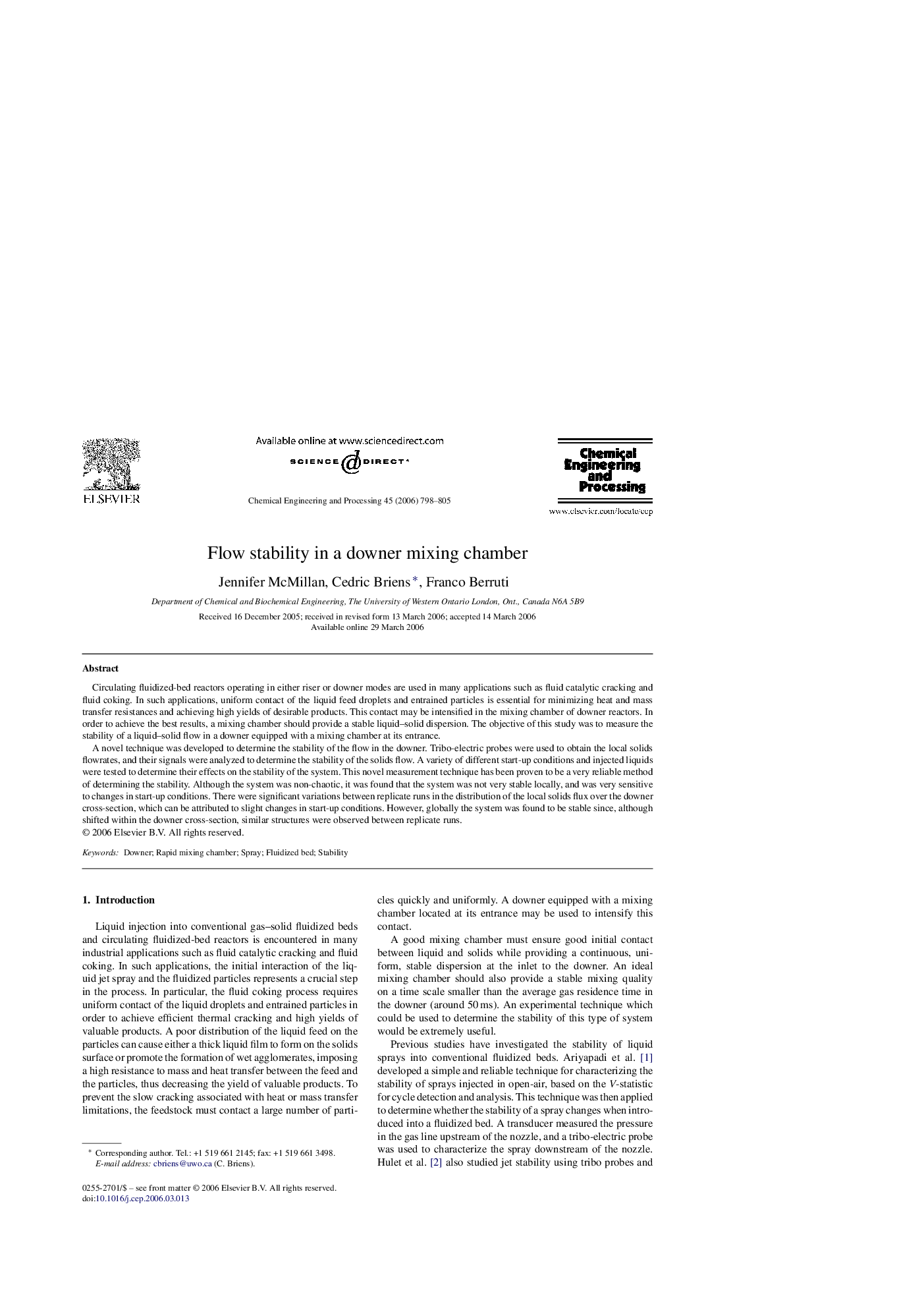| کد مقاله | کد نشریه | سال انتشار | مقاله انگلیسی | نسخه تمام متن |
|---|---|---|---|---|
| 687768 | 889352 | 2006 | 8 صفحه PDF | دانلود رایگان |

Circulating fluidized-bed reactors operating in either riser or downer modes are used in many applications such as fluid catalytic cracking and fluid coking. In such applications, uniform contact of the liquid feed droplets and entrained particles is essential for minimizing heat and mass transfer resistances and achieving high yields of desirable products. This contact may be intensified in the mixing chamber of downer reactors. In order to achieve the best results, a mixing chamber should provide a stable liquid–solid dispersion. The objective of this study was to measure the stability of a liquid–solid flow in a downer equipped with a mixing chamber at its entrance.A novel technique was developed to determine the stability of the flow in the downer. Tribo-electric probes were used to obtain the local solids flowrates, and their signals were analyzed to determine the stability of the solids flow. A variety of different start-up conditions and injected liquids were tested to determine their effects on the stability of the system. This novel measurement technique has been proven to be a very reliable method of determining the stability. Although the system was non-chaotic, it was found that the system was not very stable locally, and was very sensitive to changes in start-up conditions. There were significant variations between replicate runs in the distribution of the local solids flux over the downer cross-section, which can be attributed to slight changes in start-up conditions. However, globally the system was found to be stable since, although shifted within the downer cross-section, similar structures were observed between replicate runs.
Journal: Chemical Engineering and Processing: Process Intensification - Volume 45, Issue 9, September 2006, Pages 798–805